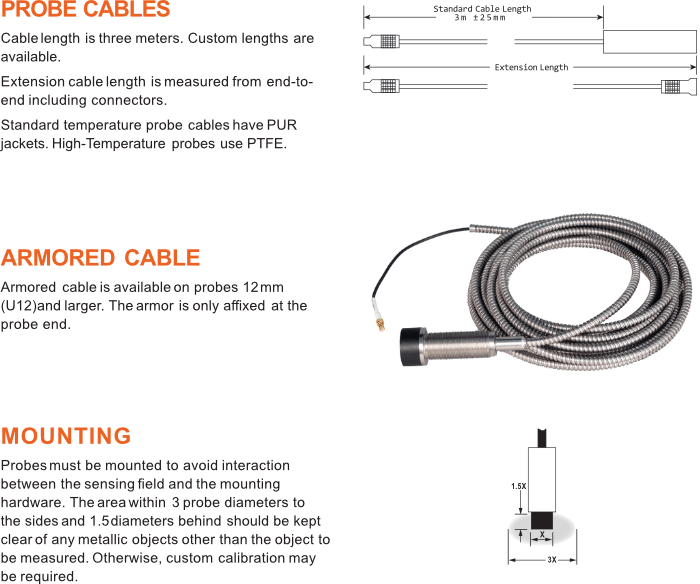CATALOG for
EDDY-CURRENT SENSORS
AN EDDY-CURRENT SENSOR SYSTEM
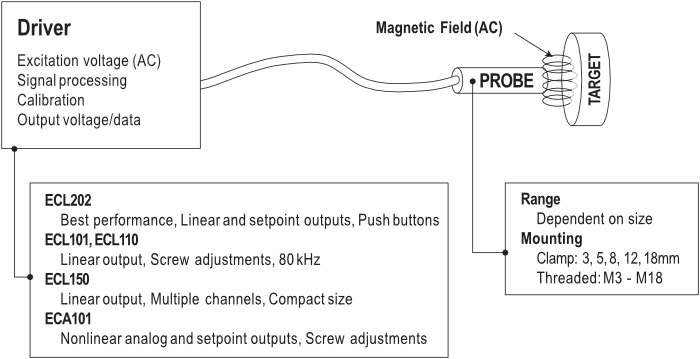
Eddy-Current Sensors
Basics
An eddy-current sensor produces an alternating magnetic field at the probe tip. When this field is near a conductive material, the field creates (induces) small electrical eddy-currents in the material. These currents generate a magnetic field that opposes the field from the sensor. As the gap between the probe and target gets smaller, the field interaction changes. The sensor electronics measure this field interaction and generate an output voltage proportional to the change in the gap.
Conductive Targets
The eddy-currents induced in the target material are dependent on the material’s properties of permeability and resistivity. As a result, eddy-current sensors are sensitive to changes in material. There can be a drastic difference between magnetic (iron, steel) and nonmagnetic (aluminum, copper) materials. Less drastic, but still significant, is the difference between two nonmagnetic materials. The material and alloy must be specified with orders to assure an accurate calibration. Because the magnetic fields penetrate the surface of the target, target materials have minimum thickness requirements; this varies with material type. TechNote LT02-0011, Minimum Recommended Target Thickness details the minimum target thickness for many materials. The TechNote is available at www.lionprecision.com; click on Technical Library.
Hostile Environments
The magnetic fields of eddy-current sensors do not “see” nonconductive materials and therefore are not affected by most contaminants. This allows an eddy-current sensor to operate while immersed in liquids and in the presence of machine coolants or other liquid materials present in the sensing area.
Maximizing Accuracy
Accuracy at the high resolutions created by precision eddy-current sensors may be affected by the environment and measurement setup. Target areas must be at least three times larger than the probe diameter. Probes must be positioned in a stable mechanical system in a stable environment. Even small changes in temperature cause expansions of the target that are detectable by high-resolution sensors.
Resolution
Resolution is a measurement system’s smallest possible measurement. Resolution is essentially a measurement of electrical noise present at the sensor output. Eddy-current sensor resolution is a function of the bandwidth of the system. The lower the bandwidth, the better the resolution. When comparing specifications, be sure to know the bandwidth at which the resolution is specified.
DRIVER COMPARISON
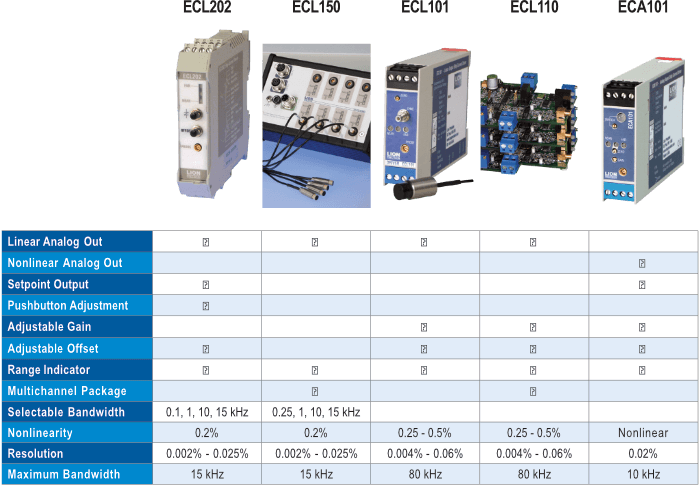
Options
Standard calibrations are for standard range probes with 3 m cables and either 6061 aluminum or 4140 steel targets. Options requiring custom calibration:
- Nonstandard Ranges
- Nonstandard Material (6061 aluminum and 4140 steel are standard)
- Nonflat Target Shape
- Custom Cable length
- Probe Extension cables to (2 m, 3m, 4 m; Probes calibrated with extension cables must be used with them)
- Probe Vacuum Compatibility (to 10-6 Torr), Probe High-Vacuum Compatibility (to 10-12 Torr)
Accessories
|
ECA101 ECL101 ECL202
|
T-connectors and cables |
ECL202 HIGH-RESOLUTION
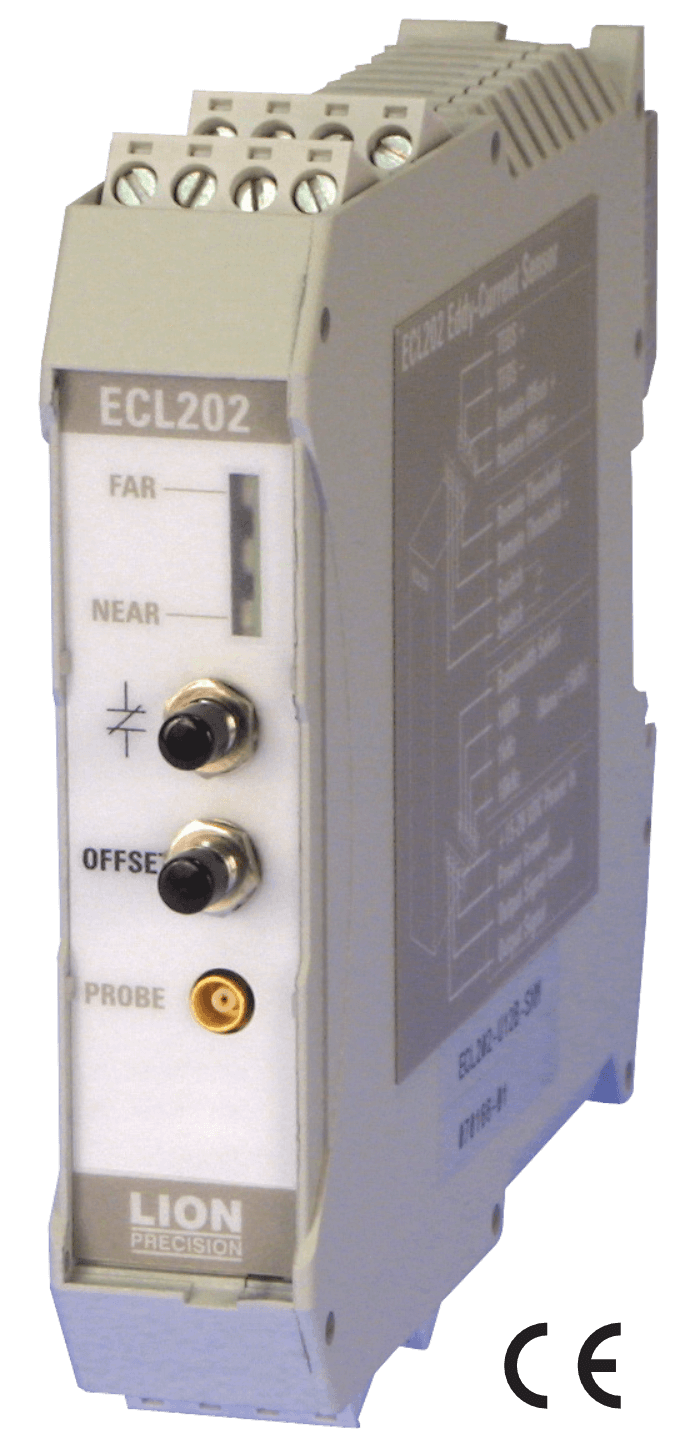 FPGA-based digital system for easy setup and high performance
FPGA-based digital system for easy setup and high performance
High Performance
- Nonlinearity: 0.2%
- Resolution, Typical: Nonferrous: 15 kHz – 0.007%; 100 Hz – 0.002%
- Bandwidth: 100 Hz, 1 kHz, 10 kHz, 15 kHz (user selectable);
Easy Operation:
- Pushbutton Offset and Setpoint (Front Panel and Remote)
- Range Indicating LEDs
- Sync Multiple Units
- 0-10 VDC Output & Setpoint Switch Contacts
Export Limitations
Because of high resolutions, export of the ECL202 to some countries requires an export license. The ECL202e has different resolution specifications and can ship without an export license.
FUNCTION DESCRIPTIONS
Pushbutton Offset: Shifts the DC level of the output voltage to 5 VDC (midscale) to establish repeatable reference point. Only functions when the probe is in the center 20% of its calibrated range.
Pushbutton Setpoint: Sets the setpoint voltage at which a contact closure output activates.
SPECIFICATIONS
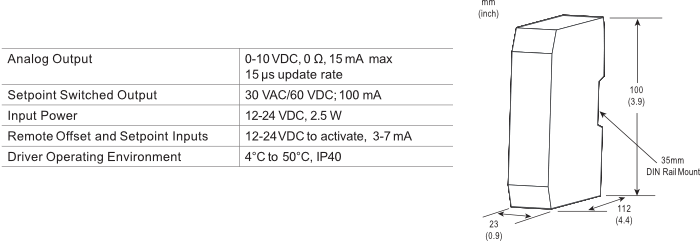
ECL202
RANGE, RESOLUTION, THERMAL DRIFT
Specifications based on standard 3 m cable, target size 3 times probe diameter.
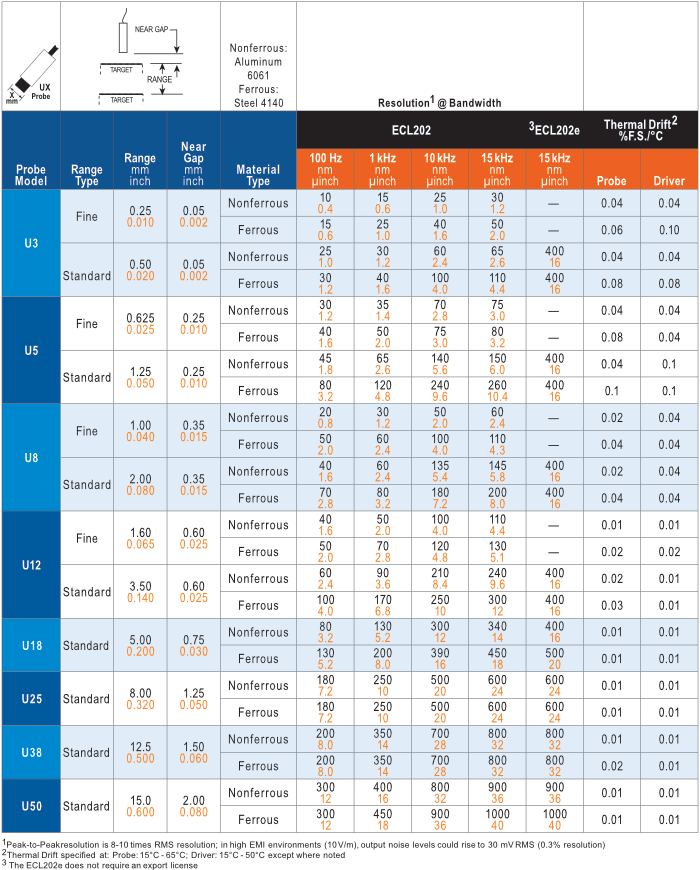
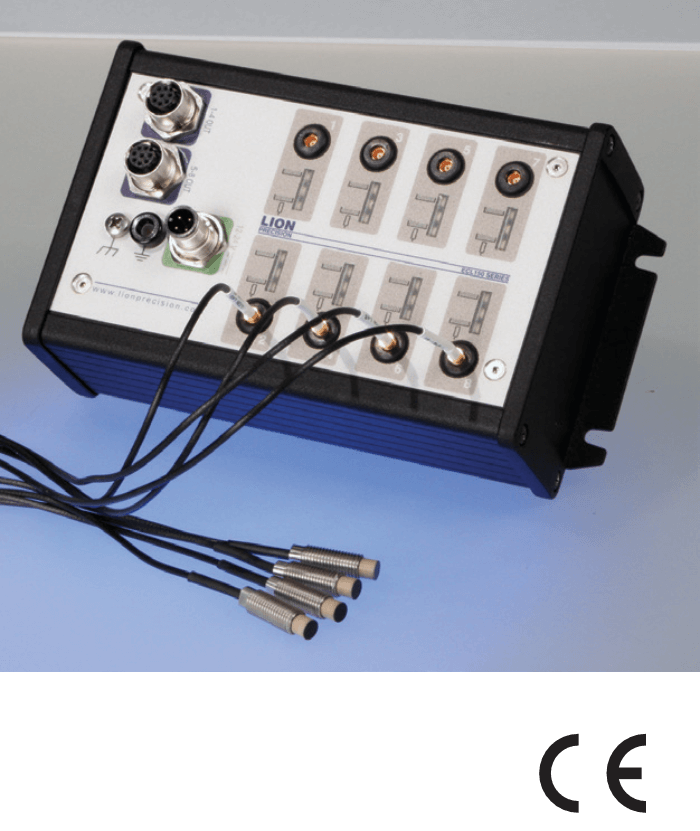 ECL150 MULTICHANNEL
ECL150 MULTICHANNEL
Compact, multi-channel, built using CompactFLEX digital technology
High Performance
- Nonlinearity: 0.2%
- Resolution (RMS): 0.002%–0.025% (Probe/Range dependent)
- Bandwidth: 250 Hz, 1 kHz, 10 kHz, 15 kHz (user selectable)
Features
- ±5 VDC Outputs
- No User Adjustments
- Range Indicating LEDs
- Up to 8 Channels in One Compact Package
- Available Without Enclosure
Export Limitations
Because of high resolutions, export of the ECL150 to some countries requires an export license. The ECL150e has different resolution specifications and can ship without an export license.
SPECIFICATIONS
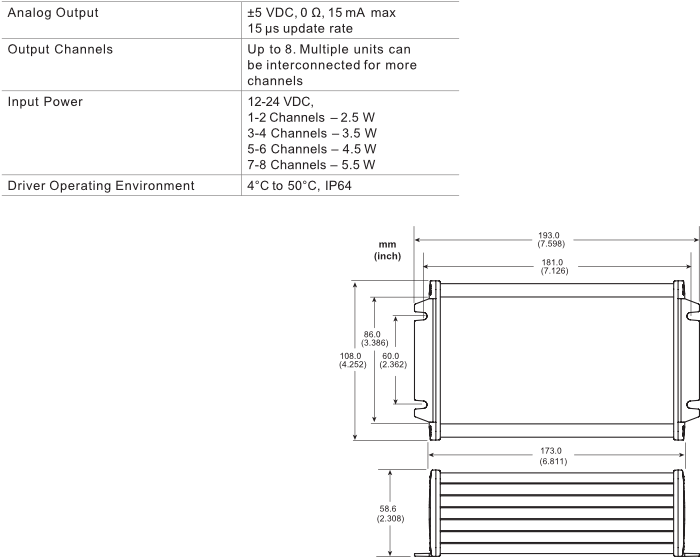
ECL150
RANGE, RESOLUTION, THERMAL DRIFT
Specifications based on standard 3 m cable, target size 3 times probe diameter.
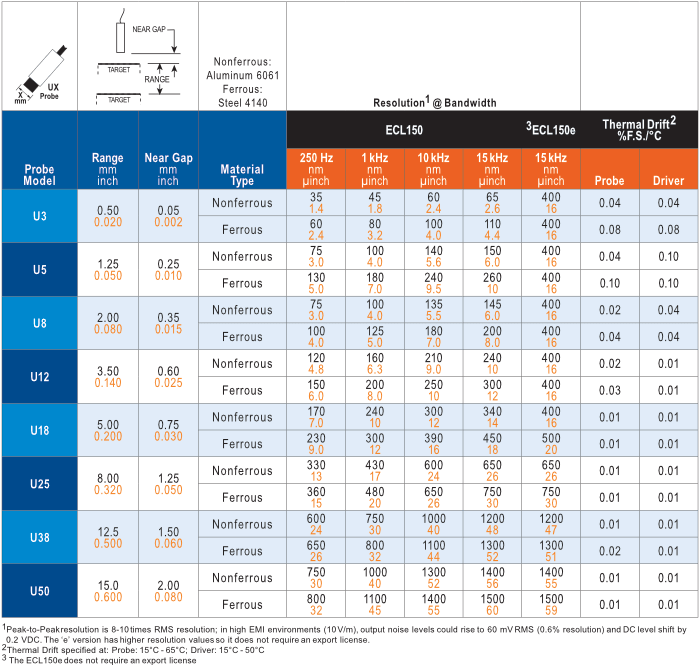
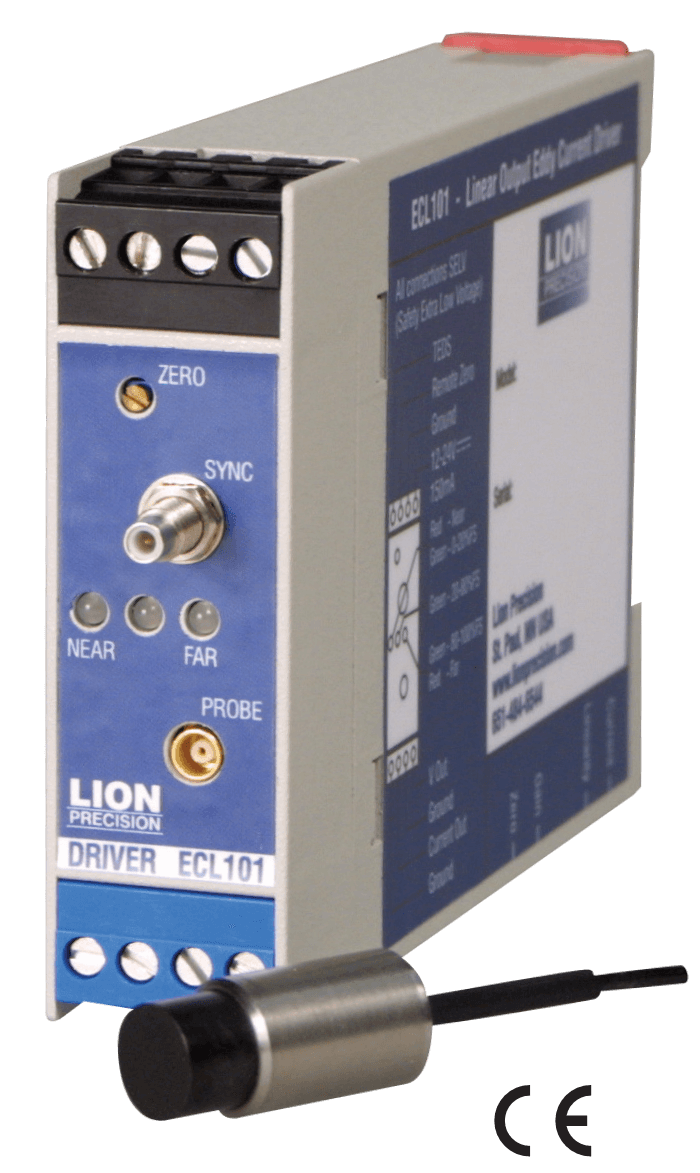 ECL101 WIDE BANDWIDTH
ECL101 WIDE BANDWIDTH
Linear, analog driver with bandwidths to 80 kHz
Performance
- Nonlinearity: 0.5%
- Resolution: 0.004%–0.06% (see Range/Resolution table below)
- Bandwidth: 1 kHz, 10 kHz, 80 kHz (factory set)
Features
- Easy Operation:
- 0-10 VDC Output
- Range Indicating LEDs
- Sync Multiple Units (requires sync kit)
- 12-24 VDC Power
- Field Calibration
Export Limitations
Because of high resolutions, export to some countries of the ECL101 and ECL110 requires an export license.
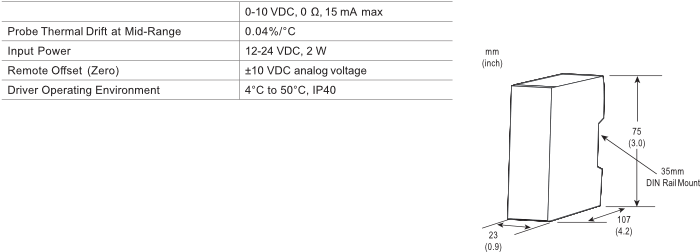
ECL110
For multi-channel applications, the ECL101 is available as a system of stacked circuit boards for maximum density in OEM applications. Up to eight channels can be ordered as a single system.

ECL101
RANGE AND RESOLUTION
Specifications based on standard 3 m cable, target size 3 times probe diameter.
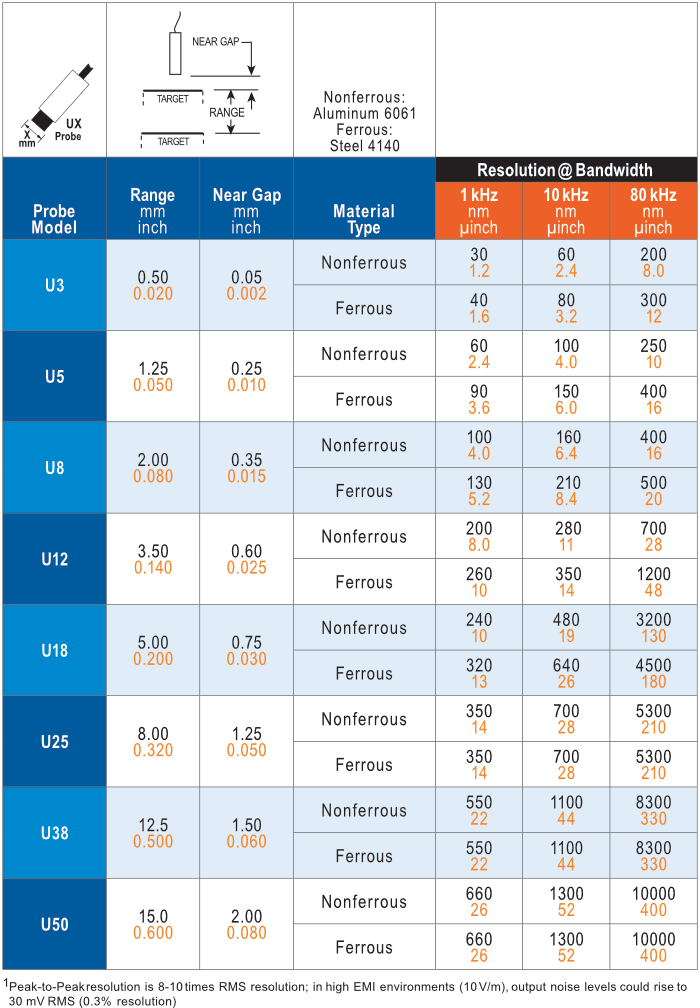
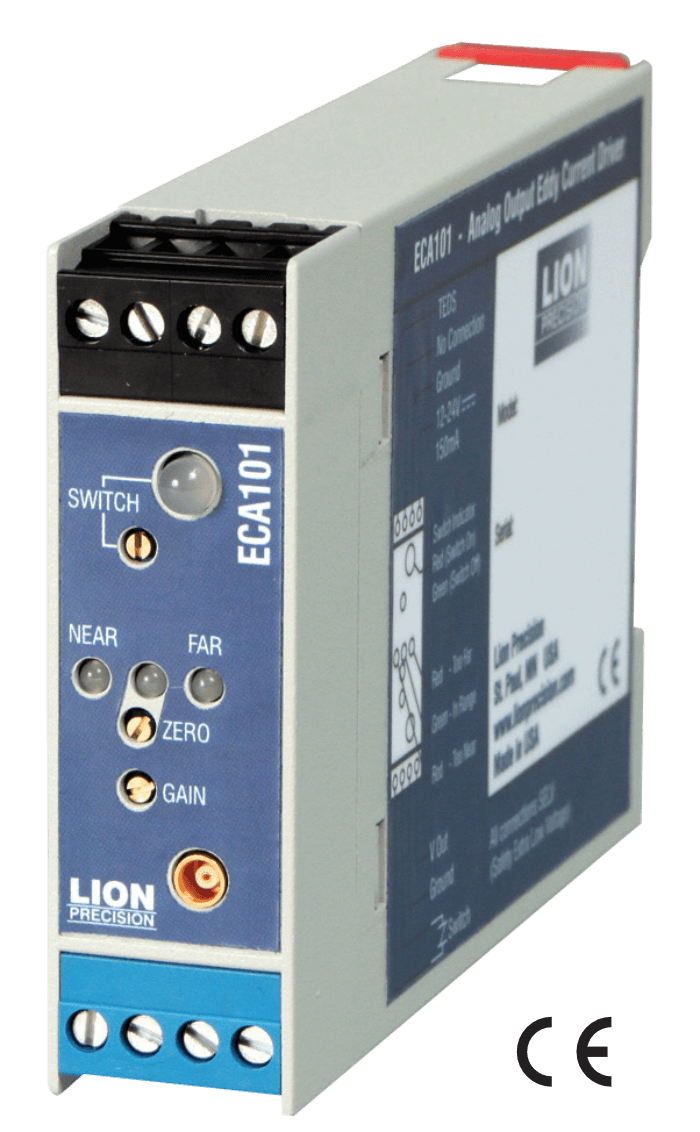 ECA101 BASIC SENSORS
ECA101 BASIC SENSORS
Lower cost sensor for repeatablemeasurements
Performance
- Nonlinearity: Nonlinear sensor, see chart below
- Resolution: 0.02% RMS1 @ 10 kHz
- Bandwidth: 10 kHz
Features
- Easy Operation:
- Adjustable Gain and Offset (Zero)
- Range Indicating LEDs
- Adjustable Setpoint
- 12-24 VDC Power
- 0-10 VDC Analog Output
- Setpoint Switch Contacts
Export Limitations
Because of high resolutions, export of the ECA101 to some countries requires an export license.
FUNCTION DESCRIPTIONS
Gain: Adjusts the sensitivity (output voltage change per unit of target position change)
Offset (Zero): Shifts output DC level
Setpoint (Switch): Adjusts analog output voltage at which setpoint switch closure occurs
SPECIFICATIONS
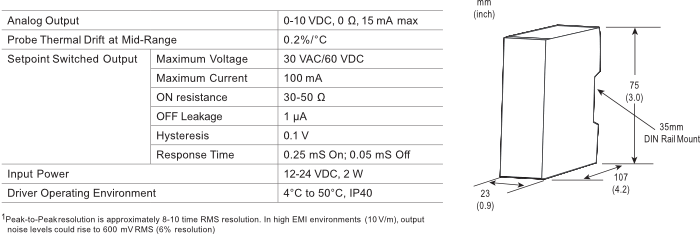
ECA101
RANGES AND LINEARITY
Specifications based on standard 3 m cable, target size 3 times probe diameter, and 6061 aluminum or 4140 steel targets.
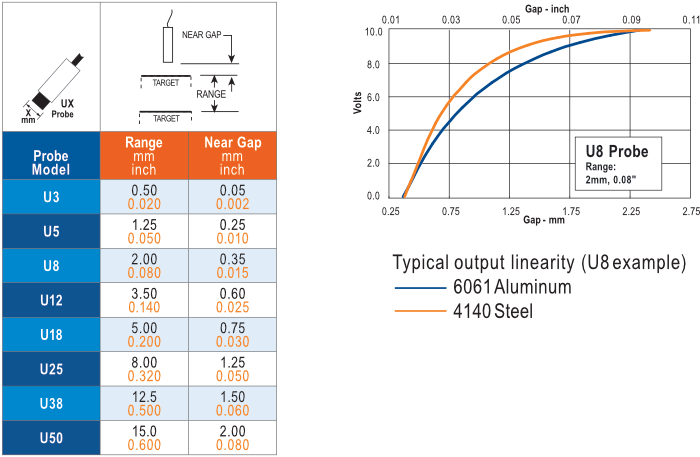
PROBES
- Probe identifiers begin with “U” and are created from the probe diameter (8 mm, 12 mm etc.) and the body style (B or C).
For example:
A U8B probe is an 8 mm probe with a “B” body style.
- Extension cables must be factory calibrated with the system.
- Targets must be 3 times larger than probe diameter or custom calibration will be required.
OPERATING ENVIRONMENT
Probes are available in two environmental ranges:
Standard: -25°C to 125°C, IP67
High-Temperature:
U3-U18: -25°C to 200°C, IP63, U25-U50: -25°C to 175°C, IP63
Vacuum compatible option available for most probes.
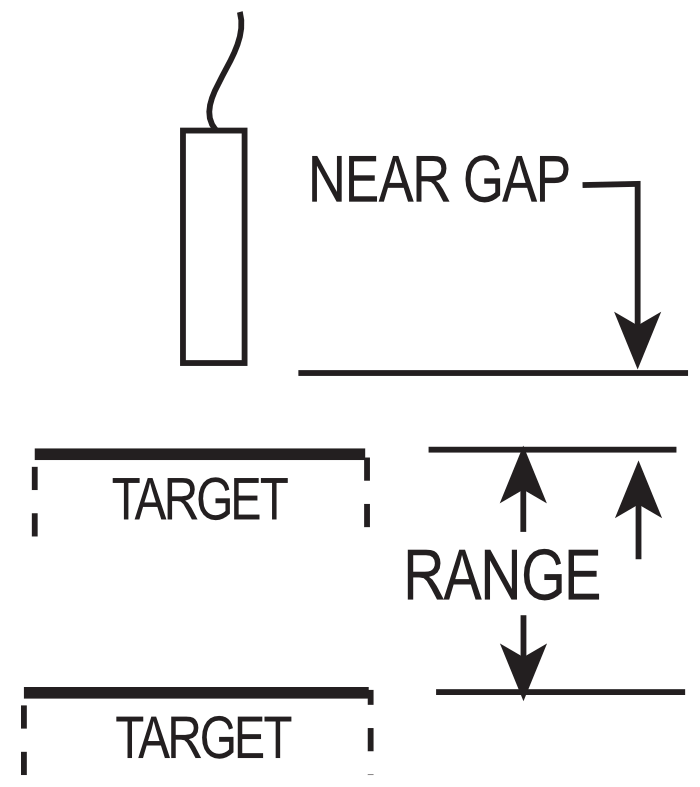 MEASUREMENT RANGES
MEASUREMENT RANGES
Larger Probe = Larger Range
Custom ranges are available.
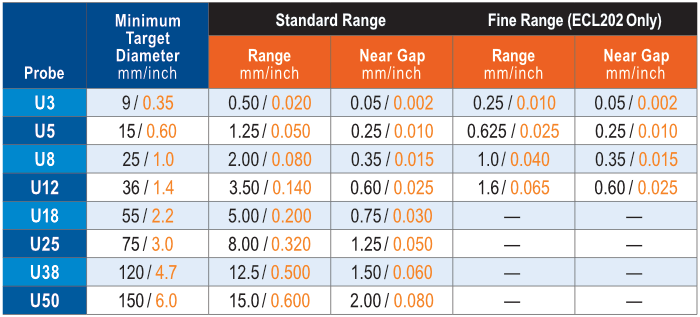
BODY STYLES AND MECHANICAL DETAIL
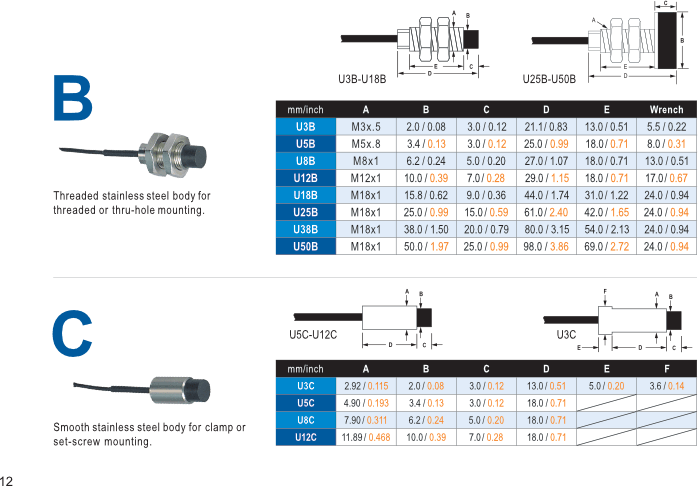
EXPORTS
Export Considerations: Because of high resolutions, export to some countries requires an export license. The ECL202 and ECL150 have ‘e’ versions (ECL202e, ECL150e) which have different resolution specifications and can ship without an export license.
Contact us or see the lionprecision.com web site for details.
TYPICAL APPLICATIONS
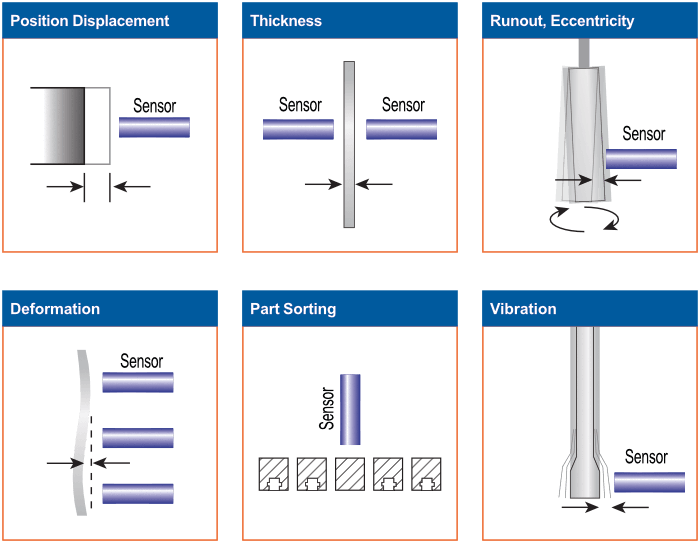
COMMITMENT TO SERVICE
Lion Precision’s commitment to service is unsurpassed in the industry. We partner with our customers to ensure their success by providing optimized sensing solutions. Contact us today and let us solve your difficult measurement problems.
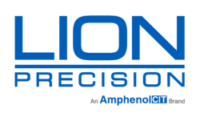
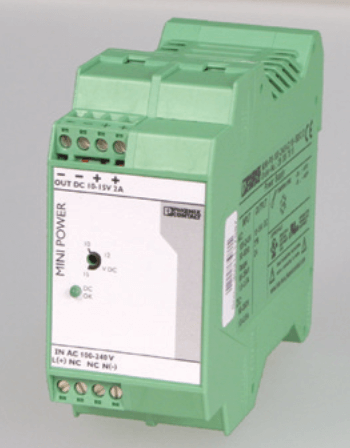 DIN Rail Power Supply
DIN Rail Power Supply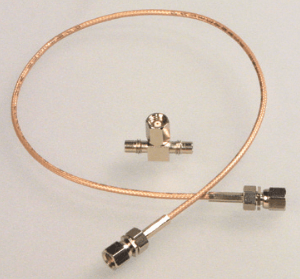 ECL101 Sync Kit
ECL101 Sync Kit